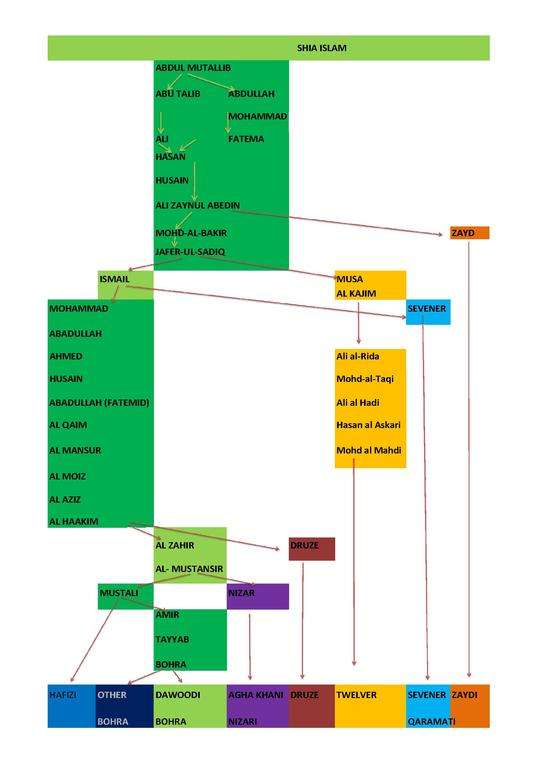Muhammad at-Taqi (Ahmed ibn Abadullah)
Muhammad at-Taqi (True name: Aḥmad ibn ʿAbd Allāh ibn Muḥammad ibn Ismāʿīl (أحمد بن عبد اللّه بن محمد بن إسماعيل) or Aḥmad ibn ʿAbd Allāh ibn Muḥammad at-Taqi[1]) (born AH 198 (813/814), died AH 225 (839/840), Salamia, Syria, Imam: AH 212 (827/828)-AH 225 (839/840)) is the ninth Ismāʿīlī Imam . As the Imam, he was the supreme spiritual leader of the Ismāʿīlī community from his appointment until his death. The Nizari and Mustaali trace their Imamate lines from him and his descendants who founded the Fatimid Empire. He was succeeded by his son, Ḥusayn ibn Aḥmad /Raḍī ʿAbd Allāh.
The 8th to 10th Ismāʿīlī Imams were hidden from the public, because of threats from the Abbasid caliphate, and were known by their nicknames. However, the Dawoodi Bohra in their religious text, Taqqarub, claim to have the true names of all 21 imams in sequence including those "hidden" imams: 8th Imam Abdillah-ibne-Mohammad the true name/ (Wafi Ahmad), 9th Imam "Ahmed-ibne-Abdillah (Taqi Muhammad), and the 10th Imam Husain-ibne-Ahmed(Raḍī ʿAbd Allāh).[2][3]
Some of his ancestors, relatives and the tree of the Ismāʿīlī Shia Islam

|
References
- ↑ The Hidden Imams of the Ismāʿīlīs, Sami N.Makarem
- ↑ The dua (prayer) "Taqarrub" lists these names amongst the Imams.
- ↑ “In addition to what has been concluded from this study, the following deductions can also be drawn: To the Ismāʿīlīs, the names of the hidden Imams after Muhammad ibn Isma'il ibn Ja'far are: Abdallah ibn Muhammad (better known in Isma'ili circles as Ahmad al-Wafi), Ahmad ibn Abdallah (better known as Muhammad at-Taqi), Husayn ibn Ahmad (better known as ʿAbd Allāh ar-Raḍī/al-Zakī) and Abū Muḥammad ʿAbd Allāh ibn al-Ḥusain (better known as ‘Ubayd Allah ibn al-Husayn, with al-Madhī as title)."- Quarterly Journal of the American University of Beirut, Vol. XXI. Nos. 1 2, Edited by Mahmud Ghul,The Hidden Imams of the Ismailis, Sami N.Makarem
